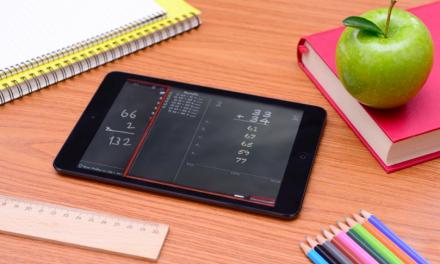Mobile technologies are putting a wealth of resources into the hands of pupils and making learning on the move a feasible proposition. Whilst some educators regard mobile learning (also called m-learning) as a way to engage with hard-to-reach pupils, others also relish the chance the technology provides to explore new ways of learning, regardless of students’ abilities and attitudes.
What is Mobile Learning?
In essence, mobile learning means the use of mobile devices to enable learning any time and anywhere. Mobile devices include tablets, smart-phones, games consoles and media players. Teaching aside, mobile devices can also support effective information management and administration.
GSMA’s Mobile Education in the United Kingdom report defines mobile learning thus:
- Use of individual, portable devices (e.g. e-Readers, tablets, Personal Digital Assistants (PDAs), and smartphones) which make use of the mobile network (i.e. are SIM-enabled)
- Aligning with curriculum objectives or used for high-stakes assessment, and will cover learning (e.g. interactive learning), content (e.g. textbooks) and administration (e.g. school records, attendance and communications)
The University of Wolverhampton’s John Traxler is (probably) the world’s first Professor of Mobile Learning. In Making mobile learning work: case studies of practice he proposes that “the various functions – and the mobility – are more important than the individual marketing niches or social groups associated with each category of devices.” These functions include:
- Connecting and communicating via telephone network, wireless network and Bluetooth connection
- Capturing and storing data that might be voice, location, position, change in position, inclination, image, video, text or number
- Providing output in the form of documents, movies, music and animations
If you want to get back to basics then take a look at Nicky Hockly’s beautifully clear introduction to the concept: Mobile learning: what is it and why should you care? (Technology Matters, Vol. 21 (2)).
Key Issues for Schools
1. Culture Change
An enthusiastic senior management team could be left frustrated if certain departments are hesitant about using the technology. Equally, a handful of pro-technology teachers won’t make much headway if learning support staff can’t operate the devices. To impact upon learning in a meaningful way, a whole-school, collaborative culture change is required.
2. Security
For learning to be truly mobile, schools need to implement a vigorous security system. Mobile learning policies must include safeguards to ensure learners’ online safety, protect their privacy and prevent inappropriate behaviour. Pupils need to know how to navigate social media and the internet responsibly, both inside and outside of school.
3. Budgets
Finance is always a thorny issue, but schools might discover that they make hefty savings on software licenses, printing, photocopies and whole-class sets of textbooks. Some schools are choosing the Bring Your Own Device (BYOD) option; others are also recruiting sponsors to fund the roll-out of mobile devices and exploring partnerships with local businesses.
Schools’ Experiences
How are schools implementing and using mobile learning? The following sources offer a range of case studies:
- ESCalate: Making mobile learning work: case studies of practice
- Lightspeed Systems: Customer stories
- SecEd: Guide to…Mobile Learning
Numeracy and Literacy
It is early days for meaningful research findings around the effects of mobile learning on literacy and numeracy, but proponents of mobile learning suggest that creating contemporary content using videos, music and animation can enhance learning outcomes throughout the curriculum.
Mobile technologies and learning summarises the findings of the m-learning research and development project at the Learning and Skills Development Agency (LSDA). It looked at the potential of mobile devices for taking learning to young adults with literacy and/or numeracy difficulties.
Handheld devices – focus on literacy & numeracy (Primary) outlines the benefits of using handheld devices in the classroom and contains ideas to support literacy and numeracy, good practice videos, and links to help teachers integrate technology into the classroom, e.g. ‘Smartphones in the classroom’. Many more resources around using ICT and mobile learning technologies in schools are available from PDST Technology in Education. Topics addressed include Twitter, floor robots, audio recordings, digital storytelling, Skype, paint software, copyright, assessment and social bookmarking.
Young People’s Perspectives
Ros Walker’s thought-provoking article, “I don’t think I would be where I am right now”. Pupil perspectives on using mobile devices for learning, offers an insight into learners’ views of mobile devices and learning. It compares two academies – one where mobile devices are embraced and one where they’re banned. (Research in Learning Technology, Vol. 21, 2013).










